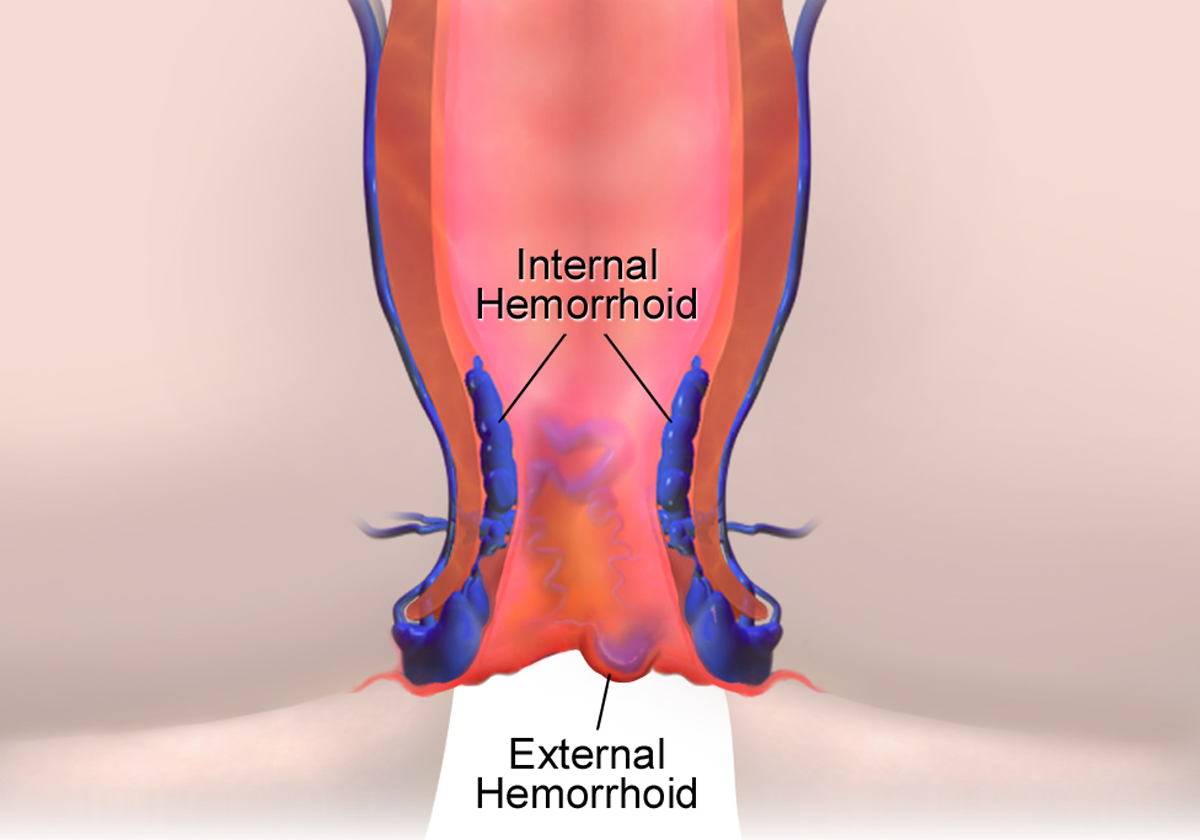Table of Contents
Hemorrhoids — that is inflamed, swollen veins in and around the anus and the rectum — are probably the very definition of "a pain in the butt". They can occur both externally and internally, and internal hemorrhoids may prolapse through the anus.

You might not like the idea of taking a closer look at hemorrhoids, but that's exactly what we'll do in this article by examining their symptoms and causes, as well looking at treatment options for hemorrhoids and some preventative measures that can help you avoid ever suffering from this particular pain in the behind.
Hemorrhoids: Causes And Prevalence
Hemorrhoids are horrendously common. They develop when veins in the rectum are inflamed, swell, and stretch. Seventy-five percent of people will experience hemorrhoids at least once in their lifetime, and they are most likely to show up in those people who are aged between 45 and 65 and pregnant or postpartum women.
Anal and rectal veins may swell for a number of reasons, including a diet too low in fiber, straining on the toilet, chronic constipation and/or diarrhea, and sitting on the toilet for too long. All of these causes have something in common: they increase the pressure on the pelvic veins. This same pressure also weakens connective tissues in the anal canal, potentially leading to bulging veins — hemorrhoids.
Connective tissues in the anus and rectum naturally weaken with age, which is why hemorrhoids are more likely to show up in older people. Hemorrhoids during pregnancy are caused by the inevitable increased abdominal pressure, but the good news is that pregnancy-related hemorrhoids will usually disappear by themselves following childbirth and recovery.
Symptoms You Can Expect If You Have Hemorrhoids
External hemorrhoids can give themselves away by forming hard, uncomfortable lumps around the rectum — pointing to so-called thrombosed hemorrhoids. They can also cause rectal pain and blood on your toilet paper or within the stool. Believe it or not, many external hemorrhoids don't have any clear symptoms and they may be gone before you even know you had them.
Internal hemorrhoids often lead to bright red blood in stools or on toilet paper after wiping. You may also experience itching and in rare cases pain. If an internal hemorrhoid prolapses, it will bulge from the anus and make itself rather noticeable. You may also feel the urge to have a bowel movement after meeting your toilet needs, due to the presence of a large internal hemorrhoid that causes pressure.
It is important to keep in mind that hemorrhoids so frequently disappear on their own that many patients never experience any symptoms. Though symptoms can quickly clear up if they do appear, anyone with symptoms that could point to hemorrhoids should be aware of the fact that you could also be dealing with other medical conditions. Colon cancer leads to rectal bleeding and pain too, to name one example, and it is always wise to notify your health care provider about the changes you have noticed.
See Also: Hemorrhoids: Best Methods To Cure Hemorrhoids
Diagnosing Hemorrhoids: What Can You Expect?
A physical examination will be the first step in the diagnostic process, right after you tell your doctor why you came to see them and describe your symptoms. A visual inspection shows external hemorrhoids, while a rectal exam with an anoscope can reveal internal hemorrhoids within the rectum. A colonoscopy, in which a flexible tube called a colonoscope is inserted through the anus, is an exam that has the capacity to show the inside of the rectum and colon. A sigmoidoscope (shorter than the colonoscope) may also be used, and X-ray is performed in certain cases.
- Photo courtesy of BruceBlaus by Wikimedia Commons : commons.wikimedia.org/wiki/File:Blausen_0408_Hemorrhoids.png
- Photo courtesy of Ōmono by Flickr : www.flickr.com/photos/dreammaker182/5842704393/

